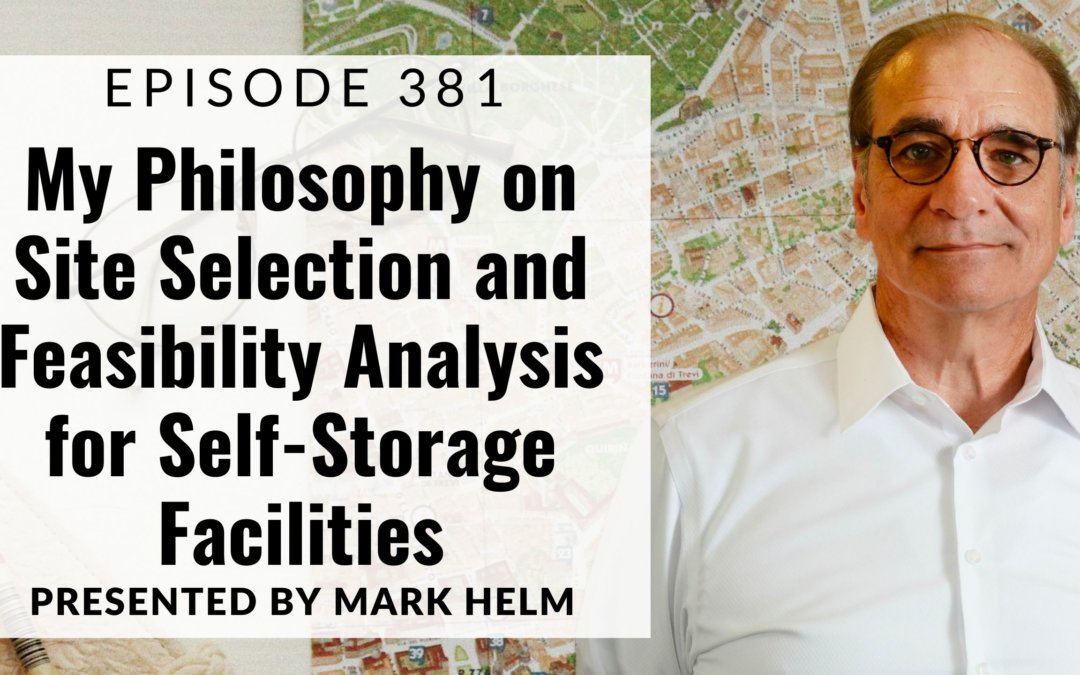I hear it almost daily from someone, “I see self-storage facilities everywhere.”
If you’re considering entering the self-storage industry, or for those of us in it and growing our business, one of the most critical steps is selecting the right site for your facility.
Site selection and feasibility analysis play a vital role in determining the success and profitability of your self-storage business.
Perhaps the most important role.
In this episode, I will explain my ideas on a good site and why, as well as what I consider key factors to consider when conducting a site selection and feasibility analysis for self-storage facilities.
Site Accessibility and Visibility
In the brands we own and have owned, overall, 86% of our customers live within 3.2 miles of our facilities.
Every facility is different, but this is the average for us. The denser the population, the closer. But you can guess a 3-to-5-mile radius in most facilities.
We want to be visible to our customer base.
At any given moment, let’s say 10% of the people living within the customer range will need storage. Our goal is for as many of our potential customers to see us daily (i.e., “good location”). So, when they need storage, they call, or when they go online, they see our facility and say to themselves, “Oh, yes, that facility. I’ll start here.”
The location of your self-storage facility should be easily accessible and visible to potential customers. Ideally, it should be situated near main roads, highways, or busy intersections, ensuring convenient access for individuals and businesses.
A highly visible site increases the likelihood of attracting customers and generating a steady flow of business.
Demographic Analysis
It is also important to understand the demographics of the potential site and the surrounding “market Area” (in most cases, 3-to-5-mile radius).
I would pay attention to the following:
- Population size. I don’t think there is a magic number like 50,000 in a 5-mile radius. But I want to see some people in the potential market area.
- Population growth trends. You want to see it going up, not down.
- Income levels. My experience is the lower the income, the shorter the average stay, thus the lower the lifetime value of a customer. There is just more churn. Again, no magic number. An $80,000 average household income in Alabama is awesome. In San Francisco, it is near poverty.
- Housing characteristics of the area. A growing population with a high percentage of renters and homeowners lacking adequate storage space can be a demand driver for self-storage facilities.
- Education levels. In a shifting economy, people with higher education, people tend to be able to pay their bills better. I have no standard here. I just notice it and weigh it in with the other factors.
Market Demand
Analyzing the existing self-storage market in the chosen area is essential. Evaluate the competition by identifying the number of existing self-storage facilities, their sizes, occupancy rates, and rental prices. A saturated market may pose challenges, whereas an underserved market could present an opportunity for your facility to thrive.
Additionally, consider any local zoning regulations and restrictions that may impact the development of a self-storage facility.
You can do this work on your own at first, prior to controlling a property. You could even use subscription services such as Yardi Matrix or Radius Plus, but always get a feasibility report from an independent third-party vendor before moving forward to closing on the site. Your lender will most likely require this anyway.
For preliminary financial analysis, I usually just use a per-square-foot number. My experience is for a single-story drive-up, we typically get about 15,000 square feet of storage per acre. Also, a self-storage fabricator can usually take a survey and lay something out for you on paper.
Infrastructure and Utilities
Evaluate the availability and adequacy of infrastructure and utilities at the potential site. Access to electricity, water, and sewage systems is essential for the smooth development of your facility.
Don’t forget to check the speed of available internet connectivity. Your success, to a large degree today, depend on your ability to offer online reservation, move-ins, and payment options.
Conclusion
Selecting the right site for a self-storage facility is more important today than ever. With all the supplies out there, good site selection is the difference between success and failure.
By choosing the right location, you can enjoy all the benefits this fantastic business offers us, small investors.
Good hunting.



